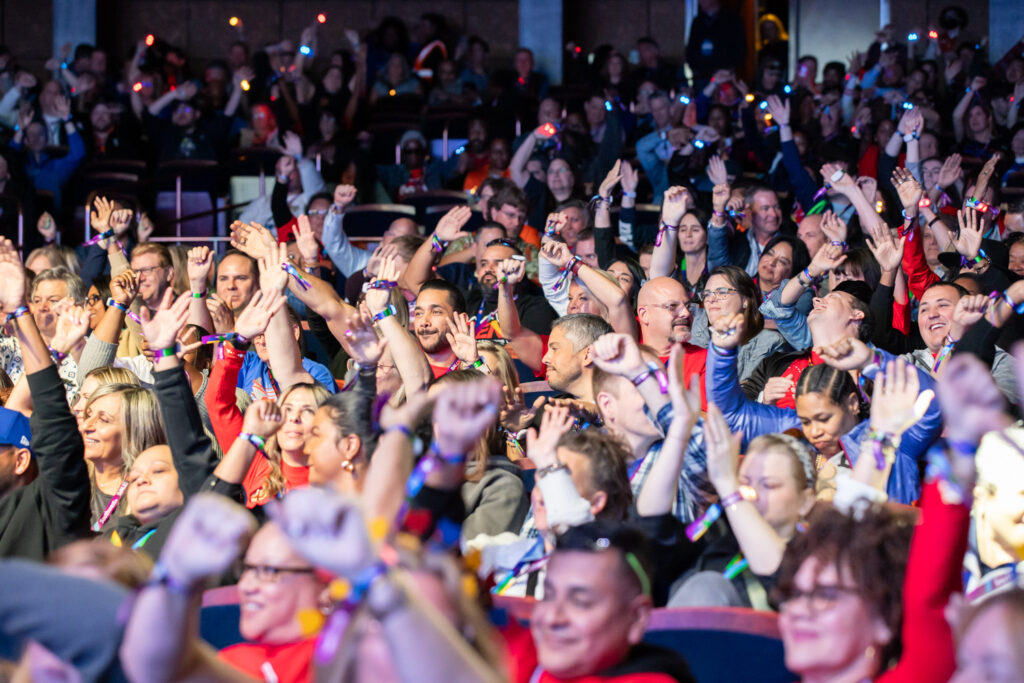Why Inspiration & Imagination Matter in Events
The importance of designing events that do more than just inform cannot be overstated; they must inspire. When you do this, you foster creativity, participation, and emotional resonance. The business value of inspired events is clear: inspiration fostered at corporate events can bleed into the workplace and lead to consistent innovation, higher retention, team alignment, and stronger brand perception. After all, companies with a highly engaged workforce are 21% more profitable than competitors. In this blog, we'll explore the strategies and concepts to help you build imaginative event experiences from the ground up.
The Science of Inspiration
The human brain is wired to respond to certain emotional and cognitive triggers. At events, these triggers, such as surprise, novelty, connection, and meaning, can lead to inspiration.
Storytelling is a potent tool for activating imagination and personal reflection in your attendees, making the experience more memorable and motivating. Encourage presenters to relate business topics to broader, relatable experiences like art, travel, or childhood wonder—experiences that open minds and stick with us.
Core Elements That Spark Inspiration
Event inspiration comes from a blend of message, design, and delivery. Here's how to incorporate these elements into your event:
- Immersive Environment Design: To design a great event space, you need to strike a balance between energetic and quiet zones. Vibrant, lively areas are fantastic for collaboration and building energy, but it's just as important to include quieter spots for reflection or focused work. This approach creates a more stimulating environment that caters to everyone's needs. For example, one report shows that 78% of people want breaks during work events, and 65% feel more comfortable when quiet areas are available.
- Unexpected & Delightful Moments: Break up the traditional event agenda with surprise elements. This could be anything from a pop-up activity to a surprise guest, which can spark excitement and keep thoughts fresh. Team-based creative challenges or competitions that align with the event's themes can also foster cross-functional collaboration in a fun and memorable way.
- Purposeful Agenda Planning: The agenda should be structured to balance creative, thought-provoking sessions with practical, skill-building workshops. For example, a morning keynote speech could be designed to inspire and challenge attendees to think differently, while an afternoon session could be a hands-on workshop that provides concrete takeaways and practical applications of the morning's ideas. The speakers and facilitators you select are critical to this balance. Choose voices who challenge the norm, tell compelling stories, or are known for prompting "aha" moments in their audience. Their role is to ignite imagination and set the stage for the practical application of new ideas.
Techniques to Fuel Imagination Before, During, & After the Event
The work of inspiring your audience doesn't begin when they walk through the door and doesn't end when they leave. Intentional strategies before, during, and after the event can ignite imagination, sustain engagement, and leave a lasting impression.
- Pre-Event Inspiration Triggers: Build anticipation with imaginative invitations or creative videos that preview the event's imaginative tone. You can also spark curiosity by sharing thought-provoking questions or discussion starters on internal channels before the event even begins.
- In-Event Engagement Tools: Encourage hands-on engagement with interactive learning stations that let attendees engage with content in reflective ways. Consider using illustrators or internal creatives to visually map key themes and discussions in real time, reinforcing messages in an engaging, memorable way.
- Post-Event Inspiration Capture: Keep the inspiration alive by sharing creative recaps, like photo essays, highlight reels, or creative summaries. You can also gather employee takeaways to feature in internal newsletters or town halls, reinforcing the inspiration through peer voices.
Measuring the Impact of Inspired Experiences
To truly understand your ROI, it's crucial to evaluate how well your event sparked inspiration and imagination. This is important for refining future experiences and proving ROI.
- Qualitative & Quantitative Metrics: Use surveys for one-word responses and mood tracking to gauge inspiration. You can also use event software that encourages participation and records idea generation and collaboration.
- Long-Term Value: Look for metrics that tie inspired experiences to long-term benefits like employee creativity, retention, or team cohesion. Use these findings to prepare for future events by defining success metrics such as increased pre-event engagement and higher registration rates.
Use Findings to Prepare for Future Events
- Key Metrics: Define success metrics such as increased pre-event engagement and higher registration rates.
- Post-Event Surveys: Re-emphasize the role of collecting feedback to understand the effectiveness of your pre-event strategies.
- Employee-Centric Metrics: Stress metrics like employee satisfaction and internal collaboration outcomes.
- Continuous Improvement: Highlight the importance of using insights gained to iterate and improve future events.
Download Our eBook: 8 Fundamentals of an Internal Communications Strategy
If your people are sending out the “whatever” vibes, it’s time to get back to the basics. Make sure your internal communication strategy is following 8 fundamentals to cultivate an engaged workforce aligned with your company’s success.
Elevating Events Through Strategic Inspiration
The power of multi-sensory design, creative interaction, and emotional storytelling cannot be overstated in elevating your event's impact and driving deeper engagement. It's about crafting experiences that resonate on a profound level, leaving attendees not just informed, but inspired and connected.
At CPG, an experienced event planning agency, we help organizations craft events that leave lasting impressions and connect with audiences on a deeper level. We help you define clear objectives and build agendas that activate emotions and create unforgettable moments.
Contact CPG today to learn more about how we can help you design your next sensory-driven, impactful event that truly resonates with your audience and delivers exceptional ROI.


